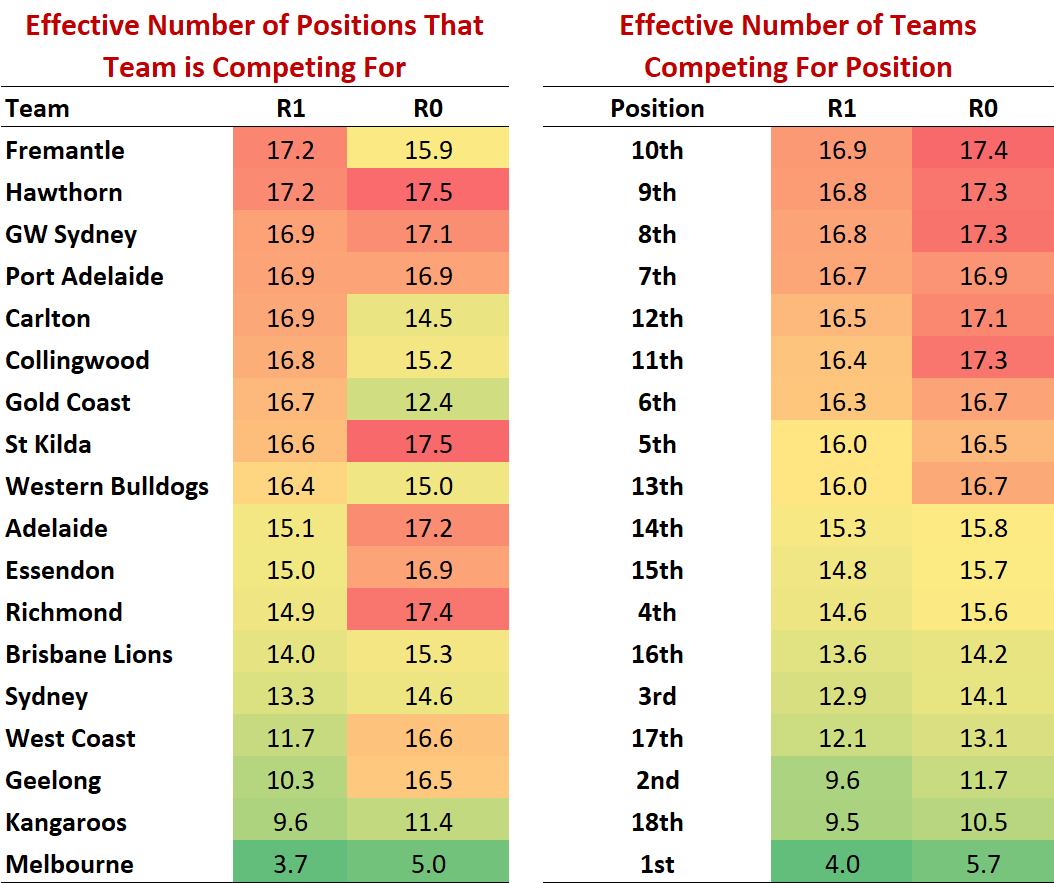2022 : Simulating the Final Ladder After Round 1
/The first round results have, as usual, changed most people’s estimates of many of the 18 team’s chances of playing Finals football, and they’ve changed MoSHBODS’ estimates, too.
Let’s see by how much (for details about the methodologies I’ve used, see this earlier blog).
LADDER FINISHES
Here, firstly, are the projections for teams’ ladder finishes. The results from the Standard method are on the left, and those from the Heretical method on the right.
Looking first just at the Standard Methodology, we see that the range of Expected Wins now spans the range from 8.9 to 14.6, which has shrunk in size a little from our earlier estimate of 8.5 to 15.4, as Melbourne’s estimated tally has become, arguably a little more reasonable.
The biggest decline in Expected Win tally came for Essendon (down 1.5 wins), and the biggest increases for Gold Coast (+1.7) and Carlton (+1.6),
In terms of Top 8 chances, there were a large number of sizeable changes, especially for Geelong, Western Bulldogs, Fremantle, Collingwood, Carlton, Gold Coast, and Essendon. Those changes have largely served to level the playing field, with 11 teams now assessed as having between 30% and 70% chances of playing in September. (There are also eight teams assessed as having about a 20% to 40% chance of finishing Top 4).
Comparing the results for the Standard and Heretical Methodologies we find, as usual:
A larger range of Expected Wins from the Heretical approach (7.4 to 17.2 wins)
Similar Top 8, Top 4, and Minor Premiership probability estimates from both methodologies for all teams, but with those from the Heretical approach slightly sharper (ie nearer 100% and 0%)
TEAM AND POSITION CONCENTRATION
The HHI figures for the most recent simulation replicates appear below, with those from the Standard methodology on the left, and those from the Heretical methodology on the right. (For information about the HHI, also see that previous blog linked to earlier).
Standard Methodology - 50,000 Replicates
HERETICAL METHODOLOGY - 2,500 REPLICATES
Here too the results are quite similar, although the Heretical methodology generally has teams effectively competing for fewer positions, and has each ladder position being effectively competed for by fewer teams.
Both methods suggest that most teams are effectively competing for between about 13 and 17 different ladder positions, and that most ladder positions have effectively between 11 and 17 teams competing for them. The exceptions amongst the teams are Port Adelaide, Richmond, and North Melbourne, and amongst the ladder positions 1st and 18th.
It is also, as usual, the mid-table positions that are associated with most uncertainty.


